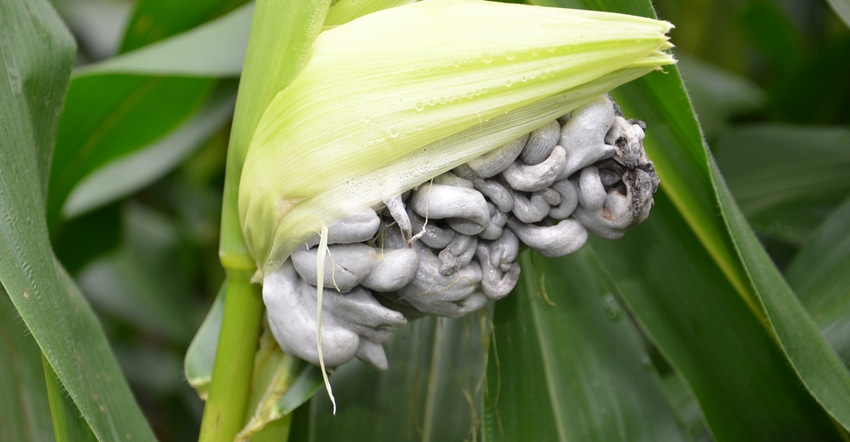
You’re walking fields or even harvesting corn and see a plant ahead with a big, ugly smut ball where the ear should be hanging. It’s enough to turn your stomach just because smut in corn is an ugly growth that looks totally out of place.
“We found a few plants with corn smut while scouting in the Corn Watch ’19 field late in the season,” Dave Nanda says. He’s director of genetics for Seed Genetics-Direct, Jeffersonville, Ohio. Seed Genetics-Direct sponsors Corn Watch ’19.
“The good news is that although it’s ugly, it usually doesn’t cause much, if any, economic yield loss,” Nanda continues. “That’s because it’s usually limited to a few plants here and there. Obviously, you lose yield input from those affected plants. But there’s usually not enough plants affected to impact yield in any significant way.
“It’s just one of those things to be aware of and perhaps make note of while you’re scouting or harvesting. It’s possible you might see more of it in some fields than others, and in some hybrids compared to others.”
Cause and effect
According to the Purdue University Corn and Soybean Field Guide, smut in corn is caused by a fungus called Ustilago maydis. Even the name is ugly!
Silvery galls develop most often on ears. However, the field guide notes they can also develop on stalks or even leaves. When the smut gall matures, it’s filled with black spores inside. These spores will eventually be released and survive in crop residue and in the soil.
In his May article Effects of flooding or ponding in corn prior to tasseling, Bob Nielsen, Purdue Extension corn specialist, wrote that the organism causing common smut is “ubiquitous,” which basically means you can find it in soil or residue wherever corn is grown. He says the chances for infection with the smut organism increase when young corn plants are damaged by floodwaters. That may be one reason why you could encounter common smut in corn more frequently than normal this year.
Few management options
Nielsen says there is limited resistance to common smut in the industry. However, the Purdue Guide indicates it may be possible to run across a very susceptible hybrid. Check with your seed dealer if smut appears on more than a few scattered stalks within a hybrid, even this year.
Otherwise, the Purdue field guide indicates management isn’t really warranted — one, because the organism is always around; and two, because it doesn’t cause true economic loss in most cases.
Nanda agrees that common smut is more of something to note and be aware of rather than to become alarmed over. It’s likely it won’t impact your bottom line.
About the Author(s)
You May Also Like




